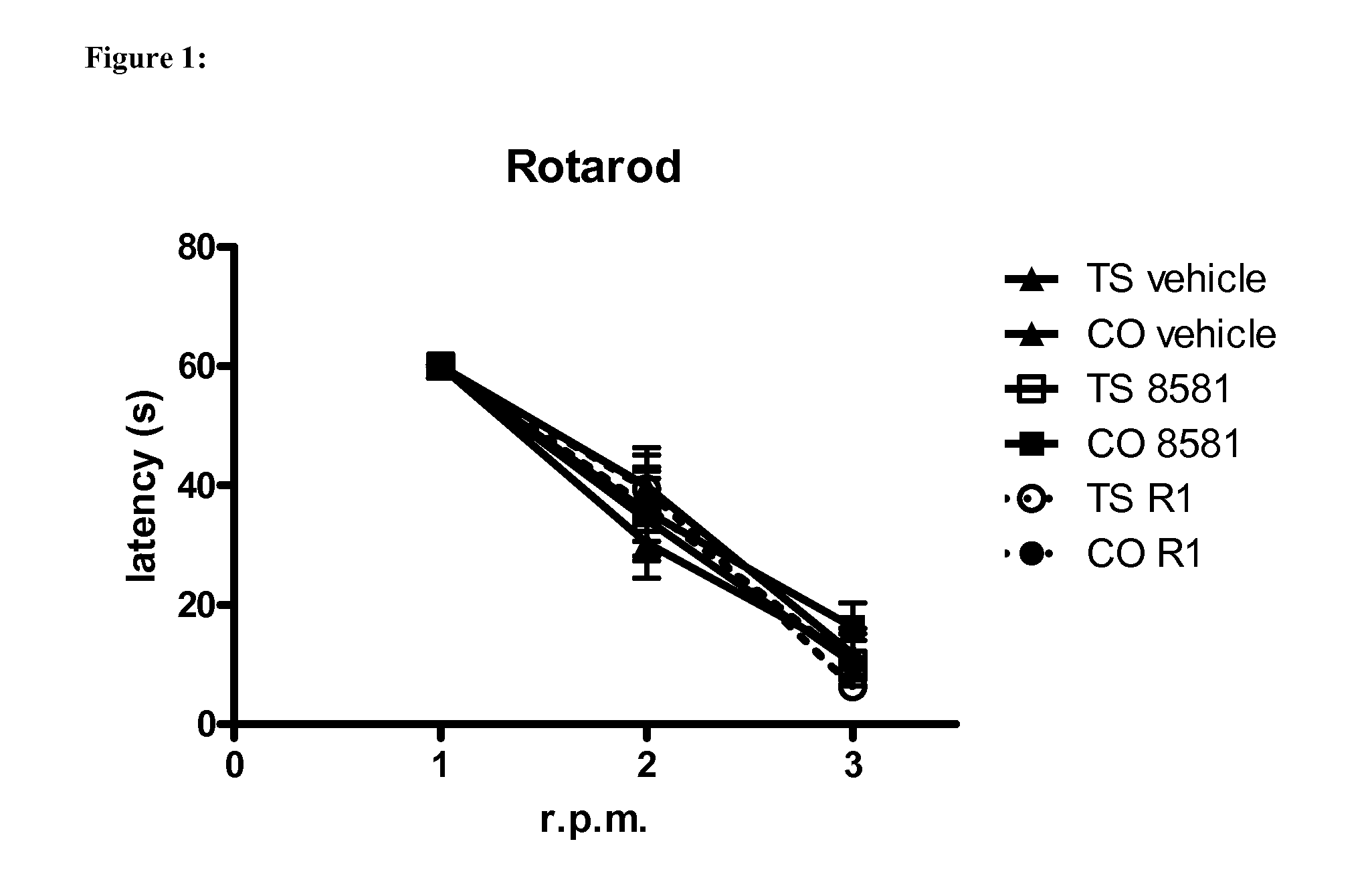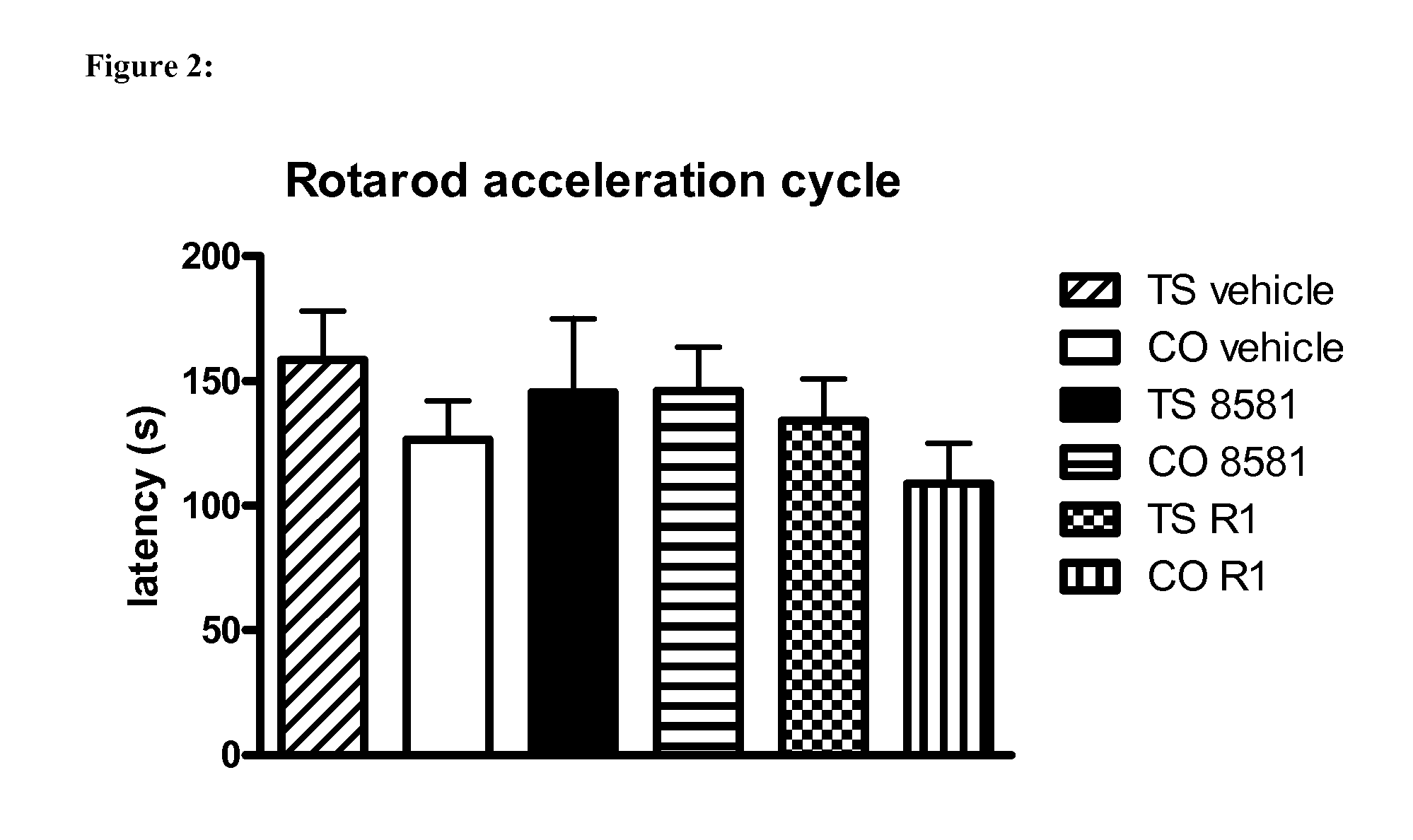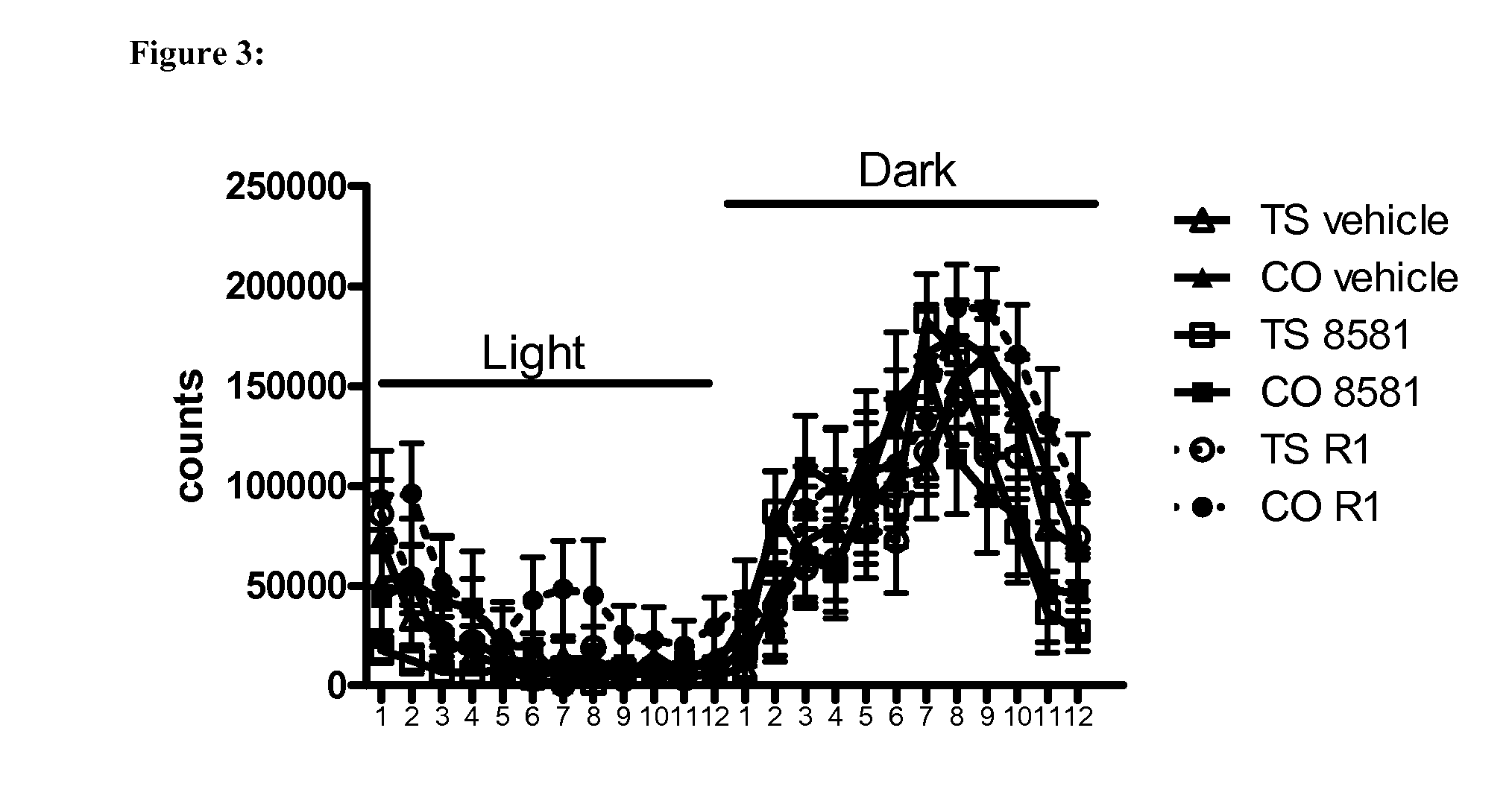Use of selective GABA A α5 negative allosteric modulators for the treatment of central nervous system conditions
a technology of allosteric modulators and gaba a, which is applied in the direction of heterocyclic compound active ingredients, drug compositions, biocide, etc., can solve the problems of inability to safely use people with ds, risk of convulsion, and no therapeutic option available for the treatment of cognitive deficit, etc., to achieve selective bzd site ligand, improve cognitive function, and improve the effect of pharmacological profil
- Summary
- Abstract
- Description
- Claims
- Application Information
AI Technical Summary
Benefits of technology
Problems solved by technology
Method used
Image
Examples
example 1
Sensorimotor Tests
[0392]A battery of sensorimotor tests was performed following the procedure described by Rueda N et al. [Neurosci Leu (2008) 433(1):22-27]. In the visual placing reflex test, cerebellar and vestibular functions were evaluated. In 3 consecutive trials, mice were gently lowered by the tail towards a flat surface from a height of 15 cm. The response of forepaw extension was scored on a 0-4 scale [4: animal extends the forepaws when placed at the highest height; 3: forepaws extended before touching the surface with vibrissae; 2: forepaws extended after vibrissae touched the surface; 1: forepaws extended after the nose touched the surface; 0: no extension].
[0393]To evaluate auditory sensitivity, the startle response to a sudden auditory stimulus was measured. Mice were placed facing the wall of an unfamiliar cage and the auditory stimulus was generated by clapping together two stainless steel forceps (7 cm long). A score (0-3 points) was assigned based on the magnitude ...
example 2
Motor Coordination: Rotarod
[0398]Motor coordination was evaluated using a rotarod device (Ugo Basile; Comerio, Italy), which consists of a 37-cm-long, 3-cm diameter plastic rod that rotates at different speeds. In a single session, 4 trials with a maximum duration of 60 s each were performed. In the first three tests, the rod was rotated at constant speeds of 5, 25 and 50 rpm, respectively. The last trial consisted of an acceleration cycle, in which the rod rotated progressively faster, and the animal had to adapt to the growing demands of the test. The length of time that each animal stayed on the rotarod was recorded.
[0399]As shown in FIGS. 1 and 2 motor coordination in the rotarod was not modified in mice of either genotype after 8581- or R1-treatment. Ts65Dn and control mice did not differ in the latency to fall from the rotarod at different constant speeds (ANOVA ‘genotype’: vel 2: F(1,76)=0.63, p=0.42; vel 3: F(1,76)=1.54, p=0.21) or during the acceleration cycle (F(1,76)=1.87...
example 3
Spontaneous Activity: Actimetry
[0402]In this test the circadian variation of the animals' spontaneous locomotor activity during a complete light-dark cycle of 24 hours was evaluated. The apparatus is a device (Acti-system II, Panlab, Barcelona) that detects the changes produced in a magnetic field by the movement of the mice. It registers the movements of animals during a continuous 24 hour cycle (12 hours of light and 12 hours of darkness).
[0403]FIGS. 3 and 4 show that Ts65Dn and control mice (ANOVA ‘genotype’ dark: F(1,76)=2.79, p=0.10; light: F(1,76)=2.24, p=0.14) under vehicle, R1 or 8581 treatment (ANOVA ‘treatment’ dark: F(1,76)=2.20, p=0.12, light: F(1,76)=0.27, p=0.76; ANOVA ‘genotype×treatment’: dark: F(1,76)=0.79, p=0.45; light: F(1,76)=0.39, p=0.67) did not differ in the amount of spontaneous activity performed in their home cage during the dark or the light phase of the cycle.
PUM
| Property | Measurement | Unit |
|---|---|---|
| height | aaaaa | aaaaa |
| diameter | aaaaa | aaaaa |
| diameter | aaaaa | aaaaa |
Abstract
Description
Claims
Application Information
 Login to View More
Login to View More - R&D
- Intellectual Property
- Life Sciences
- Materials
- Tech Scout
- Unparalleled Data Quality
- Higher Quality Content
- 60% Fewer Hallucinations
Browse by: Latest US Patents, China's latest patents, Technical Efficacy Thesaurus, Application Domain, Technology Topic, Popular Technical Reports.
© 2025 PatSnap. All rights reserved.Legal|Privacy policy|Modern Slavery Act Transparency Statement|Sitemap|About US| Contact US: help@patsnap.com



